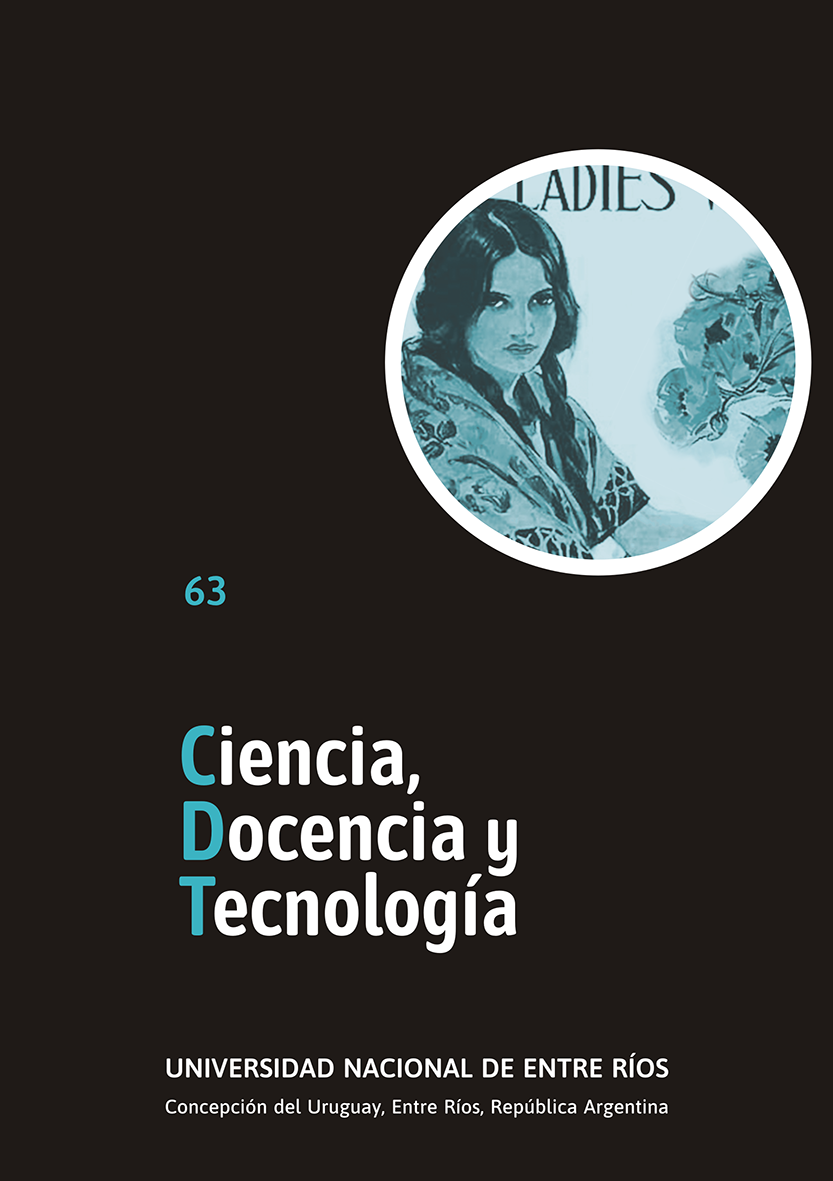The sense of the living: between biological inspiration and new ways of being
DOI:
https://doi.org/10.33255/3263/1053Keywords:
bioarte, biosemiótica, biotecnologíaAbstract
The socio-technical context has led to the evolution of experimentation on the living, transcending the fields of the laboratory and establishing unknown interdisciplinary working methods. Likewise, hybrid objects/subjects appear on the scene and claim a precise reading of their nature where the boundary between the natural and the artificial is not easy to establish. In this sense, biosemiotics is another theoretical tool from which to research the ways of biological production of meaning. From the analysis of expressions typical of bioart and scientific innovations within the field of biotechnology, biorobotics and related disciplines, it will seek to reconstruct the framework of practices, materialities and epistemological objectives that coexist in between the art-science universe of the last decades.
Downloads
References
AUBIN, C.; Choudhury, S.; Jerch, R.; Archer, L.; Pikul, J. y Shepherd, R. (4/7/2019). “Electrolytic vascular systems for energy-dense robots”. Nature, vol. 571, pp. 51-57. Disponible al 11/5/2020 en: https://doi.org/10.1038/s41586-019-1313-1
BEC, L. (2007). Life Art. En Kac, Eduardo (ed.), Signs of Life: bio art and beyond. Londres: The MIT Press.
BOLTVINIK, I. (2012). Futuros posibles y ambigüedades explícitas: arte y ciencia. Revista Código, n.° 70, Agosto-septiembre. México. Disponible en: http://www.revistacodigo.com/arte-ciencia
BRUNET, K. (2018). Mapa, arte y mar. Experiencias con estética ambiental. En Cruz, D. (ed.), Intersecta | Seminario de Arte Mediales, Chile, Ediciones Departamento de Artes Visuales. Colección Escritos de Obras. Facultad de Artes de la Universidad de Chile, pp. 57-70. Disponible al 11/5/2020 en: http://masivo.cl/media/libro/Intersecta_digital.pdf
CABRERA AGUAYO, F.; Santacruz Sulca, F.; Bermeo Jiménez, B. y Orozco Cazco, C. (2019). Diseño de robot pez bio inspirado impulsado mediante aleta caudal con 1 GDL. Ciencia Digital, 3(3.3), 345-355. Disponible al 11/5/2020 en: https://doi.org/10.33262/cienciadigital.v3i3.3.826
CANGUILHEM, G. (1976). El conocimiento de la vida. Barcelona. Anagrama.
CATTS, O. y Zurr, I. (2002). Growing Semi-Living Sculptures: The Tissue Cultures & Art Project. Leonardo, vol. 35, n.° 4, pp. 365-370.
CATTS, O. y Zurr, I. (2006). Hacia una nueva clase de ser – El cuerpo extendido. Artnodes, n.° 6. Universitat Oberta de Catalunya. Disponible al 11/5/2020 en DOI: http://doi.org/10.7238/a.v0i6.755
CURTIS, H.; Barnes, S.; Schnek, A. y Massarini, A. (2008). Biología [7ª edición]. Buenos Aires. Editorial Médica Panamericana.
FLUSSER, V. [1982] (2007). Creación científica y artística. Artefacto. Pensamiento sobre la técnica, n.° 6. Buenos Aires: edición independiente, pp. 75-77. Disponible al 11/5/2020 en: http://www.revistaartefacto.com.ar/pdf_notas/162.pdf
FLUSSER, V. [1988] (2007) “Arte vivo” en Artefacto. Pensamientos sobre la técnica, n.° 6. Buenos Aires: edición independiente, pp. 77-80. Disponible al 11/5/2020 en: http://www.revista-artefacto.com.ar/pdf_notas/162.pdf
FOX KELLER, E. (2002). El siglo del gen. Cien años de pensamiento transgénico. Barcelona: Península.
HABERMAS, J. (2000). Un argumento contra la clonación de seres humanos. Tres réplicas, en La constelación posnacional. Barcelona: Paidós.
HOUELLEBECQ, Michel (1999). Las partículas elementales. Barcelona: Anagrama.
KAC, E. (2010). Tele.presencia y bioarte. Interconexión en red de humanos, robots y conejos. Madrid. CEDEAC.
KATZSCHMANN, R. K. (18/5/2018). Building and Controlling Fluidically Actuated Soft Robots: From Open Loop to Model-based Control, en MIT Computer Science & Artificial Intelligence Lab. Disponible al 11/5/2020 en: https://www.csail.mit.edu/event/building-and-controlling-fluidically-actuated-soft-robots-open-loop-model-based-control
KATZSCHMANN, R. K.; DelPreto, J.; MacCurdy, R. y Rus, D. (21/3/2018) Exploration of underwater life with an acoustically controlled soft robotic fish. Science Robotics, vol. 3, Issue 16, eaar3449. Disponible al 11/5/2020 en DOI: 10.1126/scirobotics.aar3449
KELLY, J. (1999). Tissue Culture & Art. Entrevista a Oron Catts y Ionat Zurr. Diario Virtual ABC. Disponible al 11/5/2020 en: http://www.abc.net.au/arts/headspace/triplej/morning/tissue
KLEIN, J. (21/3/2018). Robotic fish to keep a fishy eye on the health of the oceans. The New York Times. Disponible al 11/5/2020 en: https://www.nytimes.com/2018/03/21/science/robot-fish.html
KULL, K. (2015). Introduction to Biosemiotics. En P. P. Trifonas (ed.). International Handbook of Semiotics. Dordrecht: Springer Science+Business Media.
MEDINA, J. y Vélez, P. (2014) “Soft Robotic”: Una nueva generación de robots. MASKANA, I+D+ingeniería 2014, n. ° 2 IEE, 109. Disponible al 11/5/2020 en: http://dspace.ucuenca.edu.ec/handle/123456789/21391
MORIN, E. (1990). Introducción al pensamiento complejo. Barcelona: Gedisa.
MORIN, E. (2006). El método 3. El conocimiento del conocimiento. Madrid: Cátedra.
PRIGOGINE, I. y Stengers, I. (1992). Entre el tiempo y la eternidad. Buenos Aires: Alianza Universidad.
LAURENCE, J. (27/7/2011). Científicos surcoreanos crean perro fluorescente: agencia. Trad. Rodríguez, Blanca. Reuters. Disponible en: https://lta.reuters.com/articulo/idLTASIE76Q0N920110727
SALIG, L. (1/7/2019). “Robotic blood” powers and propels synthetic lionfish. Penn Enginnering. University of Pennsylvania. Disponible al 11/5/2020 en: https://medium.com/penn-engineering/robotic-blood-powers-and-propels-synthetic-lionfish-fc632373e51d
SCHMUCLER, H. (1996). Apuntes sobre el tecnologismo y la voluntad de no querer. Artefacto. Pensamientos sobre la técnica, n.° 1. Buenos Aires: edición independiente.
SCHMUCLER, H. (2001). La industria de lo humano. Artefacto. Pensamientos sobre la técnica, n.° 4. Buenos Aires: edición independiente.
SIBILIA, P. (2010). El hombre postorgánico: cuerpo, subjetividad y tecnologías digitales. 2ª ed., 1ª reimp. Buenos Aires: Fondo de Cultura Económica.
SLOTERDIJK, P. (2001). El hombre operable. Artefacto. Pensamientos sobre la técnica. n.° 4. Buenos Aires: edición independiente.
SLOTERDIJK, P. (2000). Normas para el parque humano. Madrid: Ediciones Siruela.
Páginas web:
MIT 1990-2004: The vest years. A portrait of the 14 years when Charles M. Vest served as MIT’s president. Massachusetts Institute of Technology. Disponible al 11/5/2020 en: http://web.mit.edu/timeline/94.html
Robotic-fish.net. Disponible al 11/5/2020 en: http://www.robotic-fish.net/index.php?lang=en&id=robots
Understanding escape response maneuvers of natural fish using a soft robotic fish. MIT Computer Science & Artificial Intelligence Lab. Disponible al 11/5/2020 en: https://www.csail.mit.edu/node/6011
Published
How to Cite
Issue
Section
License
Copyright (c) 2021 LUCIA STUBRIN

This work is licensed under a Creative Commons Attribution-NonCommercial-ShareAlike 4.0 International License.
The authors retain the copyright and grant the journal the right to be the first publication of the work, as well as licensing it under a Creative Commons Attribution License that allows others to share the work with an acknowledgment of the authorship of the work and publication initial in this magazine. All content is published under the Creative Commons 4.0 international license: Attribution-Non-Commercial-Share Alike.






